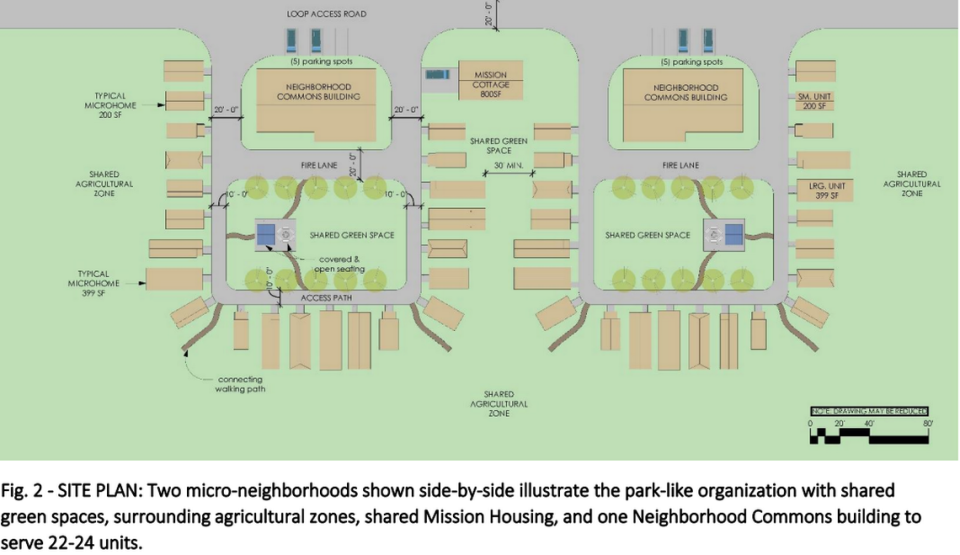Here’s what we know about a controversial housing village approved by Pierce County
After about a three-hour discussion and public hearing Tuesday night, which ended around 10 p.m., the Pierce County Council approved a zoning ordinance and funding for a controversial 285 micro-home village for people experiencing chronic homelessness on a 86-acre site just west of Spanaway.
The council passed an ordinance that allowed for the shared housing community to be built in a low-density residential housing zone. Several amendments regarding unit sizes, residential density, sanitary sewer requirements and shared housing village standards and design also passed.
Some residents who live near the micro-village site stayed for the duration of the meeting, which started at 3 p.m., in order to express their opposition to the project. Many residents who spoke said they supported the village but not on this site. Others said the project would devalue their properties, harm wetlands and animals, and be a detriment to their way of life.
“This was supposed to be our forever home. We ask you not to let this rezoning happen,” said Noell Pacho, who says noise from nearby air traffic might be triggering to traumatized people living in the village. “Please think about this. It’s not beneficial to the people you’re trying to serve. It’s not beneficial to us as a neighborhood. It’s devaluing our property. Our life went into this house. We can’t afford to move.”
Six council members voted in favor of the ordinance, with council member Amy Cruver voting against. Funding will be released pending the county executive’s signature.
“I’ve been on the record doubtful about the location, but the work [Tacoma Rescue Mission does] is beyond admirable and important work,” said County Council Chair Ryan Mello at the meeting before the final vote. “I think it’s a big hill to climb for this site. I do believe in the model and the concept and know that we need more permanent supportive housing in our community.”
What will the village look like?
The village plan, heralded by county officials as “transformational,” hit a development hurdle in October when it was discovered the site didn’t meet land-use rules. Wetlands, habitat and soil studies conducted in December concluded the village could be built in full compliance with environmental regulations.
The project, modeled after Community First! Village in Austin, Texas, would be owned and operated by Tacoma Rescue Mission, which would provide on-site work, health care, treatment, case management and security to residents. The village would focus on serving older adults who have experienced long-term chronic homelessness.

The master plan of the Shared Housing Village includes an East Village and a West Village, with an organic farm, farmer’s market, visitor’s center, behavioral health clinic, resident volunteer living quarters and village commons. The space would also house about 285 smaller living units with communal kitchens, showers and laundry buildings.
Construction is planned to be completed in fall 2028. It will be built on about 27 acres of the 86-acre property off Spanaway Loop Road and Cross-Base Highway South in unincorporated Pierce County.
How will the village be funded?
The Pierce County Council plans to release $21.55 million in American Rescue Plan Act funds to help cover the costs of land acquisition, infrastructure and pre-design. Under the funding agreement the mico-home village must be operated for at least 30 years as permanent affordable housing.
On Tuesday the council released up to $12 million of county funding for the micro-home village upon completion of required permits and associated appeal periods and pending the county executive’s signature.
If the micro-home village project is not completed in accordance with American Rescue Plan Act deadlines, the council plans to use the village funding for other projects serving the county’s chronically homeless population.
Village operation costs are expected to be funded by Pierce County Housing Authority tenant vouchers, Veteran Affairs Supportive Housing vouchers and state commerce funding, in addition to private donations, according to the Pierce County Village Proposal.

